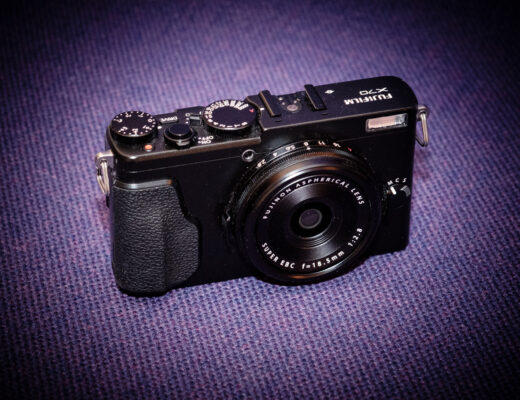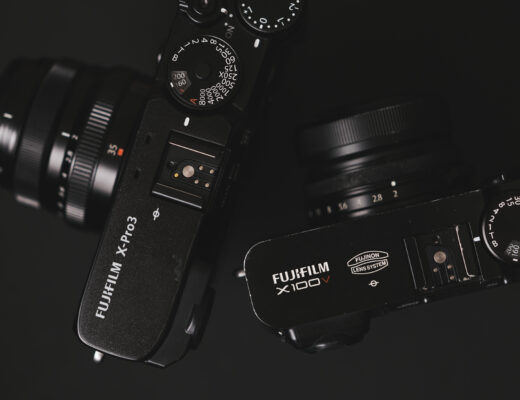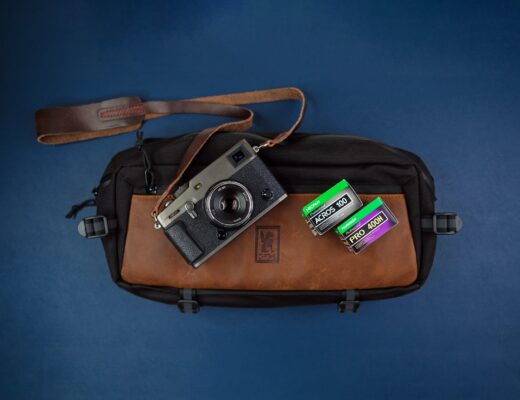When the first Fujifilm X100 came out in 2010, I was excited. The camera looked the part, but could it deliver? After testing it for a week, my initial enthusiasm was slightly dampened, considering my primary camera at the time was an amazingly fast, powerful and refined DSLR. The X100’s AF was slow and inaccurate, the hybrid viewfinder was still immature in execution, and the manual focus was difficult. I knew it was a first generation product and I accepted the technological and performance limitations; but I wasn’t ready to be an early adopter. It had the form, but lacked functional refinement. I was content with my DSLR.A couple of years later I was ready to upgrade my digital point and shoot, and I auditioned then the new Fujifilm X100S against the Ricoh GR. I must admit the decision was very difficult, but I went with the sharper lens and compact size of the Ricoh, versus the better colours and focusing features (both AF and MF) of the X100S. Finally in 2014, the mighty X100T was released. Form finally met function and performance. It wasn’t perfect, but it was a mature 3rd generation product and quickly became my favourite Fujifilm X Series camera. I had GAS (Gear Acquisition Syndrome) and I wasn’t alone. It soon became a cult classic and I knew there would be very high expectations on the next iteration of this venerable X100 series. The replacement has finally arrived, the all new X100F. It’s the latest, but is it the greatest? Let’s find out.
To begin, let’s get the obvious out of the way. The X100F has the latest generation sensor and processor, the same as the X-Pro2, X-T2 and the new X-T20. The 24.3MP X-Trans CMOS III sensor with the X Processor Pro is a great combination. I’ve tested this sensor/processor combo against full frame sensors, and it can easily equal the larger format sensors for sharpness and micro-contrast, and in some tests outperform them. However, we all know there is a third critical element for image quality, the lens. Many were surprised when Fujifilm released the X100F with the exact same lens as the previous X100T, which is also the same lens as the X100S and X100. Yes, this lens is almost 7 years old. Can it handle the new sensor’s resolving power? Can this lens optimize the new processor for AF speed and accuracy?
I spoke on the phone with Fuji Guy Billy Luong, product manager for Fujifilm Canada concerning the lens. He said he had communicated with the engineers in Japan. They were confident the original design of the X100 lens has the ability to get the most out of the new sensor and processor, especially the micro contrast. This is not surprising. There are many vintage Leica and Nikon lenses from the film era that can still produce sharp images with modern digital sensors. Although this lens is not the sharpest wide open, the centre has always been sharp, and stopping down to f/4.0-5.6 gives even sharpness across the entire field. The next question is about autofocus speed and accuracy. There are at least 50 X Photographers and a hand full of media (like myself) from around the world that have pre-production copy X100F’s. None of us can say for certainty the IQ (only in-camera RAW processing) or AF speed; but we have a good indication of what the final copies will be like. The IQ is right up there with the X-Pro2 and X-T2, but the AF speed is only slightly faster than the X100T. Some X photographers are claiming a 25-50% speed increase, but I’m not seeing this. Again, I can not make a final conclusion until I have a production copy; but considering the lens is the same as the original X100, I don’t expect to see a huge AF speed increase (similar to first generation Fujifilm XF prime lenses on the latest bodies). However, AF accuracy, continuous tracking including face detect is very good. So much so that I’ve shot video with the X100F with very good results (under good lighting).
Other than IQ and AF, there are other incremental improvements with the X100F. The slightly thicker body now accommodates the larger NP-W126S, the same as the ILC X series bodies. This is great since you can share batteries between the X-Pro2, X-T2 and the X100F. The X100F also has the same 8 way joystick from the X-Pro2 and X-T2, making it easier to navigate between the standard 91 (up to 325) focus points. In fact, the X100F functions much like a smaller X-Pro2. These two cameras have much in common in terms of form, function and features. Fujifilm has kept the hybrid viewfinder cameras as flagship products, the epitome and essence of the Fujifilm X Series. They both have the same classic rangefinder styling, same classic dials (ISO dial inside the shutter speed dial) and same limits (no 4K video, no articulating screen, no custom AF-C custom settings). The biggest difference between these two is the lack of WR and lens interchangeability on the X100F (as well as pro features like dual card slot and centred tripod thread). Is that a big deal? It depends on what you’re looking for in a camera.
This is where I answer the question if the new X100F is the greatest X100 series camera thus far, or just the latest? Perhaps many of the other reviewers may disagree with me, but I would say it is the latter. The new X100F has all the previously seen and expected upgrades (sensor, processor, ISO dial, joystick, AF features), the things everyone wanted unchanged (design/form factor, hybrid viewfinder), and just one surprise (upgraded battery). Although there were many unreasonable expectations of what the X100F might have (full frame sensor, OIS, articulating screen) there were some wish-list upgrades that were disappointingly missing. A new lens and WR would have made the X100F a ‘great’ upgrade from the X100T.
I’m not saying the X100F isn’t a solid update from the previous version, because it is. Like what the iPhone 7 is to the previous iPhone 6S, the new X100F is a solid but incremental upgrade from the X100T. It is the culmination of the X100, X100S and X100T with the latest and best technology that Fujifilm has to offer. If you owned any of the previous X100 series cameras, this new X100 will not disappoint. If you are a current Fujifilm X series shooter and you want the same image quality and eco system familiarity as the latest X-Pro2 and X-T2, you’ll get exactly what you’re expecting. However, remember that feeling when the X-Pro2 was first announced January 2016? How we were all blown away by the plethora of new (and improved) technologies and features that made it’s debut on the flagship body? I remember thinking it was the greatest upgrade seen on a Fujifilm X Series camera. There was a similar anticipation for the new X100F, that there was going to be at least one new feature or function that would floor us. A new feature that would make a Sony, Canon, Nikon or Olympus shooter want one. It didn’t happen. However, it was a good, predictable and solid upgrade, enough to sell out pre-orders from B&H and other major retailers.
The new Fujifilm X100F is the latest iteration of the cult-like X100 series. It was the beginning of the X Series for Fujifilm, and look where this little camera has taken them in less than 7 years. We now have a fully mature ILC ecosystem of bodies and lenses, and an upcoming digital medium format system. If you were sitting on the fence on the X100 series camera as a serious back up to your ILC system (including Nikon, Canon, Pentax and Sony shooters), the X100F is the best price performance non-ILC full-featured compact camera on the market. If you didn’t like the previous X100T, you won’t like the X100F because it basically functions the same (with improvements). If you already love your current X100T, then keep it because its still a great camera. However, if you want to upgrade to the latest sensor and processor (which includes ACROS film profile, AF features, etc.) then the X100F will give you most of the power and features of the X-Pro2 and X-T2 at a fraction of the size and weight. Like the previous X100T, the new X100F will sell very well and won’t be discounted until the next version arrives (X100V?). If you want one don’t wait, just order it now. If you know what you’re getting with the X100 series cameras, you will definitely be happy with the latest X100F. Stay tuned for more reviews and comparisons in upcoming articles. Happy shooting.
























